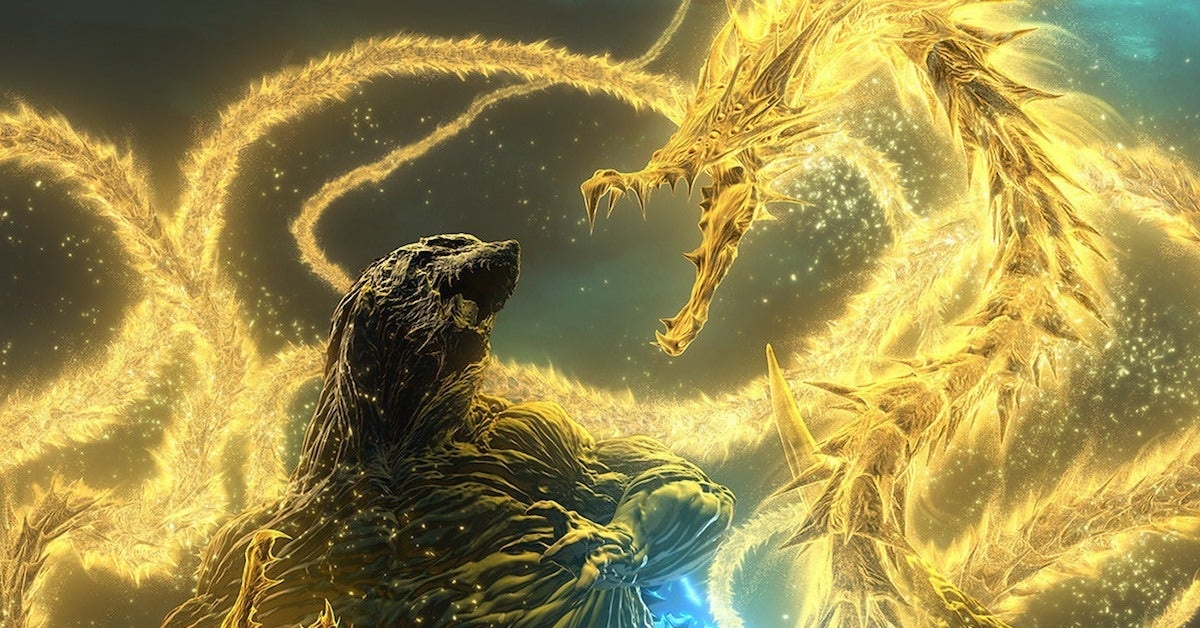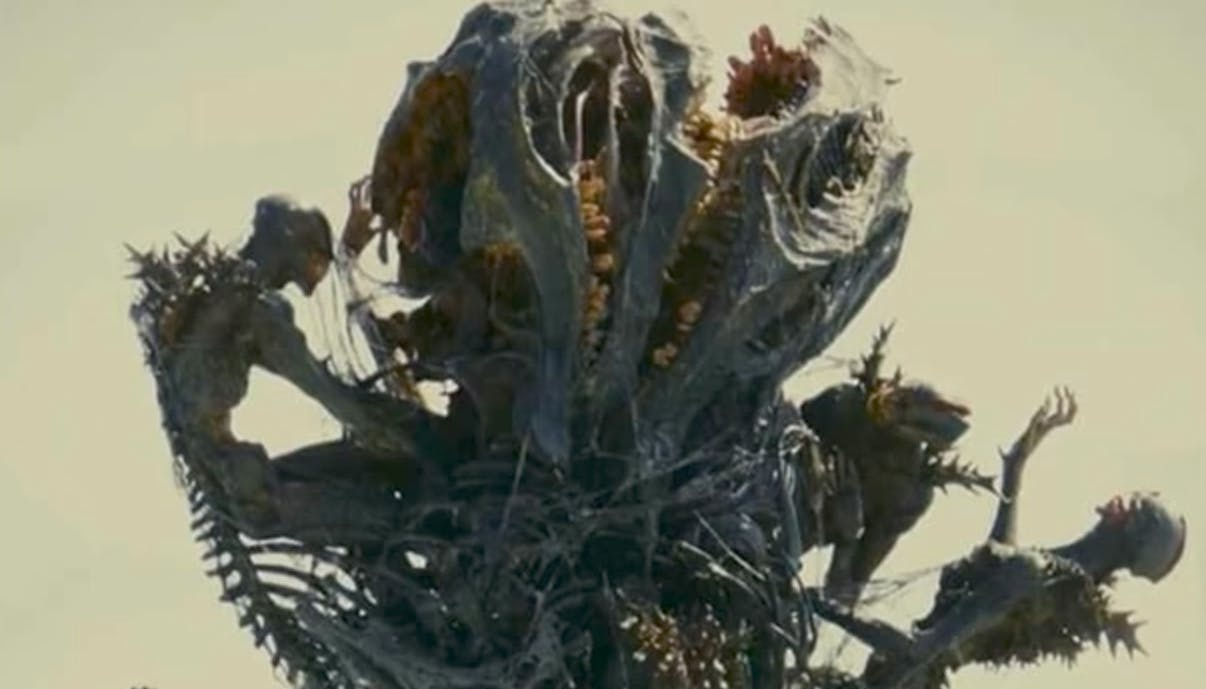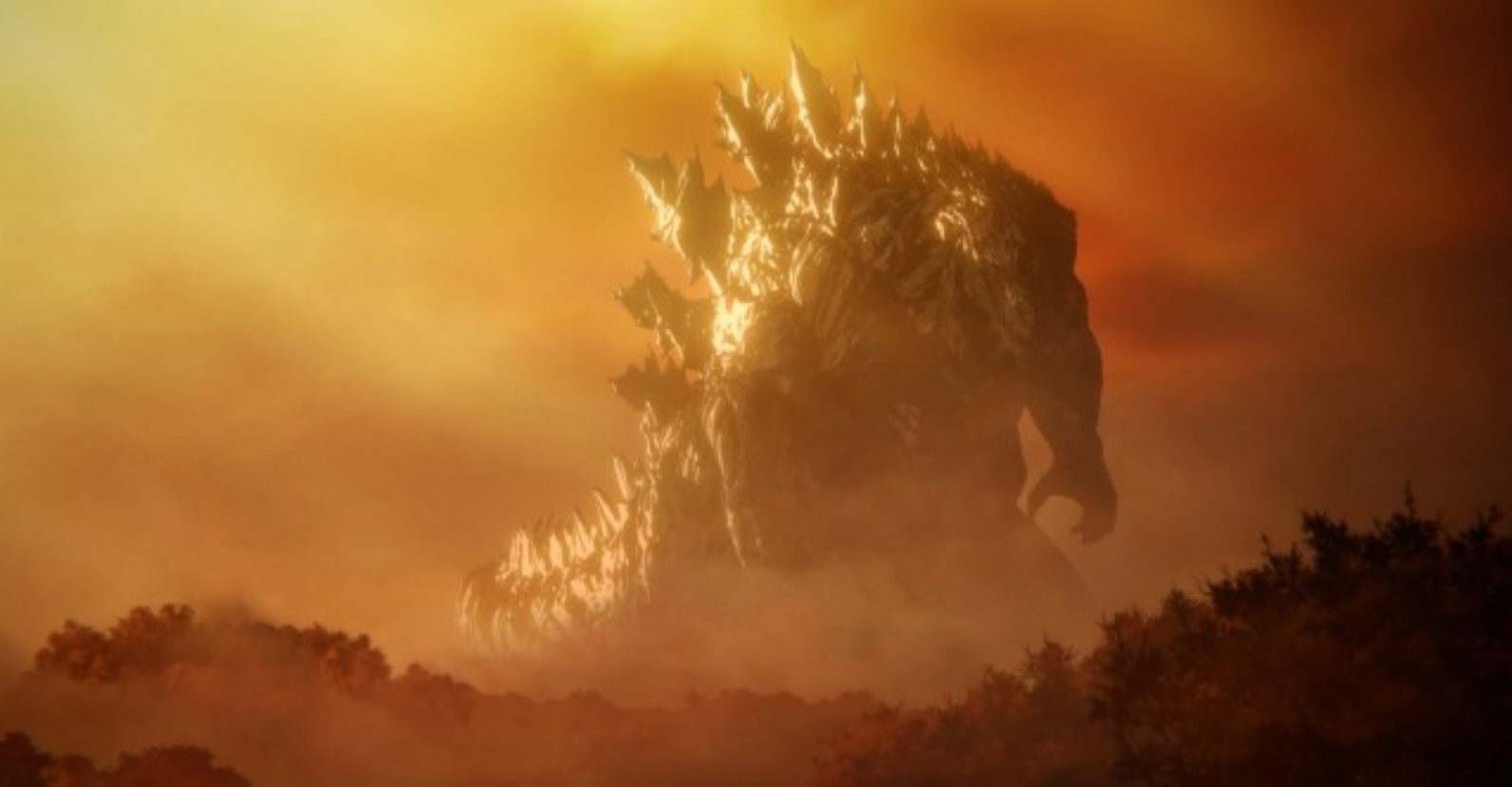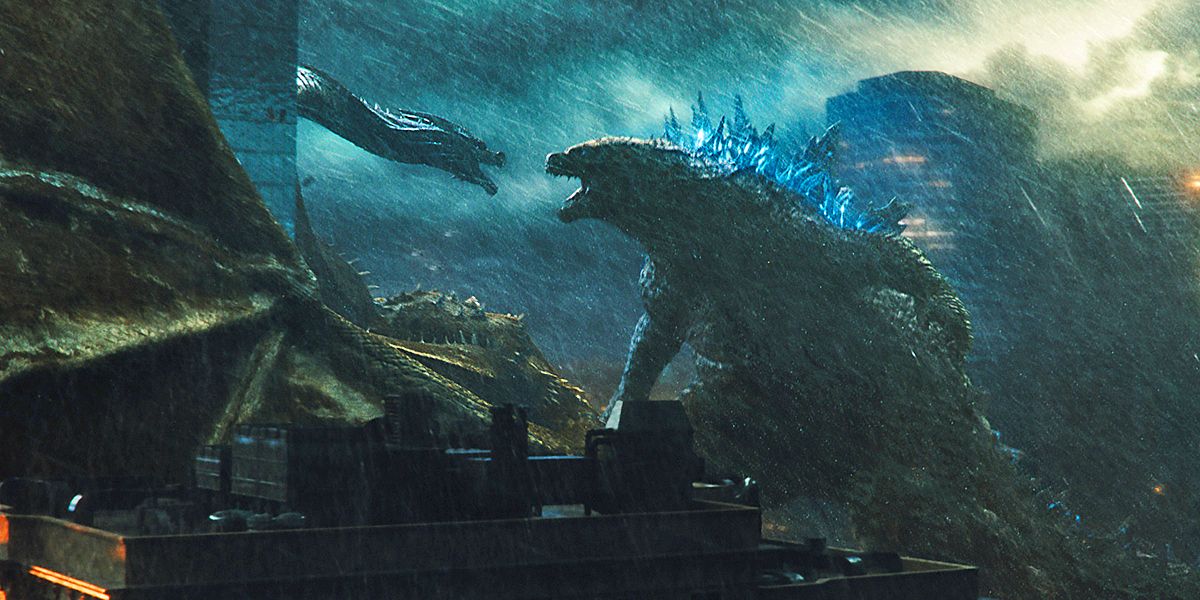Godzilla is the world's longest-running film series, and this year, the Big G turns the ripe old boomer age of 65. The thematic weight of his anti-nuclear message hasn't lost any of its poignancy or urgency, with lip service paid to it in even his most recent American and Japanese films. One of the subtlest, and most touching nods to that message, is the pocket watch that Ken Watanabe's character carries with him in 2014's Godzilla, the hands forever frozen at the moment that the bomb dropped in 1945.
However, while the threat of atomic annihilation will always linger -- and the horrors of Hiroshima and Nagasaki will never be forgotten -- things like climate change and other environmental issues loom far larger today as immediate threats to our survival, somewhat sidelining the monster's original origins.
Looking at Shin Godzilla, the recent animated trilogy from Netflix and the burgeoning American MonsterVerse, the king of monsters has (and is) going through quite a period of wildly varied reinventions of late, as different creators wrestle with his enormous legacy and reconstitute it into more timely messages about the dark paths humanity could be headed down. This is, in essence, what the world's most famous kaiju has always represented at his heart; His emergence from the depths of our still-unexplored oceans is a reckoning for us, much like the ghosts that visit Scrooge in A Christmas Carol. As both savior and annihilator, Godzilla is the ultimate anti-hero; packaged in ginormous, scaly armor.
The 2014 American/Japanese co-production was an impressive reboot -- more than enough to blast 1998's Zilla away for good (a creature so unwelcome in Toho's canon, it was stripped of the "God" from its name in 2004). It was also a very reverential reboot, doing little to move the franchise forward thematically.
Fans only had to wait two years for a more innovative Godzilla entry to come along: Hideaki Anno's Shin Godzilla, the first Japanese Godzilla film in 12 years. Anno, who is best known as the creator of cult classic anime series, Neon Genesis Evangelion, deconstructed Godzilla in much the same way he deconstructed the mecha genre with Evangelion. And by that, we mean he literally broke down the behemoth into hundreds -- maybe thousands -- of smaller, humanoid monsters. This never-before-seen form(s) is the last in a line of evolutionary jumps that the dominant kaiju makes over the course of Shin, from crawling wyvern to his usual, dinosaur-esque body.
As usual, Tokyo puts up the best fight it can, but Godzilla's atomic blasts leave the military and government scrambling at every turn. For most of the film, Anno's focus on the more hum-drum, bureaucracy of the various committees and conferences seems like an odd choice. It's only in the final, parting shot of Shin -- the startling sight of Godzilla's tail mid-transformation into hundreds of little bodies after being stopped in his tracks -- that it all clicks into place. A core tenet of Godzilla lore is that he's always made stronger by what's thrown at him. That's what makes him unbeatable. If humans can beat him as a collective, then becoming a collective himself is the next logical step.
Without a city-wide explosion or atomic death ray in sight, this fleeting moment at the very end of Shin is one of the most terrifying in Godzilla history -- a true testament to the endless adaptability of cinema's biggest monster. Through the lens of our modern, digital age of similarly endless connectivity, we could view this as an examination of how the individual self can become lost in the collective self -- much like the hierarchical structure of corporate capitalism that we see working with various degrees of efficiency in the film.
Shin Godzilla has its feet planted firmly on a recognizable version of Earth. The trilogy of CG animated Netflix films, released between 2017 and 2018, however, lifts both the eponymous beast and the human race off on a journey into a far-flung future to space and back. The three films, Planet of the Monsters, City on the Edge of Battle and The Planet Eater do bear some similarity to Shin in that both can be seen as the "last" Godzilla stories. Produced by Toho Animation, the anime films see humans expelled from our home planet by a rash of giant monsters. Twenty thousand years later, the refugees -- alongside two alien races -- make a risky return, only to find a vastly different environment, housing a vast Old Man Godzilla. (You know how goldfish grow to fit the size of their tank? Well, that.)
Unlike Shin, which has been roundly praised as a series best, the Netflix trilogy has proven highly divisive: anime fans are never thrilled by CG animation and some were disappointed by the lack of franchise staples. (An all-mighty battle teased between a city-sized MechaGodzilla and the new, XXL Godzilla never comes to fruition.) While certainly lacking the joy of past periods, the trilogy is a severe workout for your brain. Xenophobia, religion and the big "why are we here?" question are all exhaustively explored.
Around these, the film takes the idea of Godzilla as Earth's greatest protector to its farthest extreme: in the absence of humans, Earth has adapted around the great beast -- right down to its foliage. In the end, the human race is reduced to a small, subterranean tribe; the memories of our technologically-advanced past have faded and Godzilla is worshiped as a true and terrible "God" above. In short, we learn our place -- groveling at his feet in ignorant bliss, which itself becomes more frightening than the arrival of a ghostly, transdimensional Ghidorah, the "planet eater."
Godzilla: King of the Monsters takes much the same environmentally-conscious approach, except this time, it's eco-terrorists who unleash the beasts, while Godzilla takes on a more heroic role in fending them off for us. This Rock-'Em-Sock-'Em cavalcade of franchise favorites has little of the depth of the Netflix trilogy but oodles more fun. Both examine what they argue to be our "false" sense of ownership over our own planet and the catastrophic cost this attitude wreaks, with Godzilla reaching his full potential as the "rightful" ruler of Earth. One takes the kaiju slug-fest route, while the other is an interdimensional descent into existential dread. (At least neither of them feature Minilla.)
Nuclear holocausts will always be in the background of cinema's tallest terror, but at over half a century old, Godzilla continually proves himself to be the perfect skeleton to graft any number of man-made nightmares onto.




